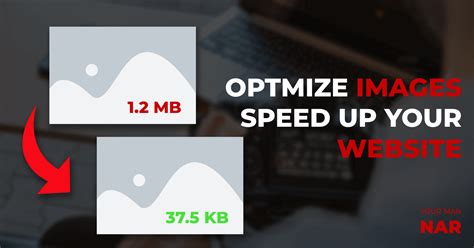When it comes to website optimization, nothing is more crucial than ensuring that your online platform runs at optimal speed. In the fast-paced digital world we live in, visitors have little patience for slow-loading websites. Slow page load speeds can lead to high bounce rates, reduced user engagement, and ultimately, loss of valuable traffic and potential customers.
So, how can you guarantee a lightning-fast user experience for your website? In this comprehensive article, we will explore effective techniques and best practices to speed up your website's loading time. By implementing these strategies, you can not only enhance user satisfaction but also improve search engine rankings and boost conversion rates.
1. Enhance Your Caching Mechanism
One of the most efficient ways to speed up your website is by leveraging browser caching. This technique involves instructing the user's browser to store static resources, such as images, CSS files, and JavaScript, for future reference. By enabling caching, returning visitors will experience significantly faster load times as they won't need to download these resources again.
Important Note: While using caching is highly recommended, it's crucial to ensure that the cache duration is appropriate. You need to strike a balance between reducing load times and ensuring that the latest version of your content is always displayed.
2. Optimize Image Files
In today's visually-driven web, images play a crucial role in capturing users' attention and conveying your brand message. However, large image files can significantly slow down your website. To optimize your image files, consider reducing their dimensions, compressing them without noticeable loss of quality, and utilizing modern image formats, such as WebP.
Remember: While optimizing your images is vital for speed, it's essential to maintain their visual appeal. Find the right balance between file size reduction and image quality to ensure your visuals remain captivating and professional.
3. Minify Your CSS and JavaScript
Every line of code in your CSS and JavaScript files adds to the file size that needs to be downloaded by visitors' browsers. By minifying your CSS and JavaScript, you can eliminate unnecessary characters, white spaces, and comments, effectively reducing their file size. This optimization technique can significantly improve your website's loading speed, especially for users with slower internet connections.
Expert Tip: Remember to keep a backup copy of your original files before minifying them. This will allow you to make future edits or customizations without any hassle.
Optimize Image Size and Format

Increase the efficiency of your website's loading speed by optimizing the dimensions and file formats of your images. This can significantly enhance the user experience and reduce the time it takes for your webpages to load.
When it comes to image optimization, two important factors to consider are the size and format of the images used on your website. By reducing the size of your images, you can decrease the amount of data that needs to be transferred, resulting in faster loading times. Additionally, choosing the right file format can also contribute to improved page load speed.
Resizing images to their optimal dimensions is a crucial step in optimizing your website. Use image editing software or online tools to resize images to the exact size you need. Avoid using images with larger dimensions than required, as they can slow down your website's loading speed.
Another aspect to consider is the file format of your images. Different file formats have different compression capabilities, which can affect the file size and loading time. Use compressed file formats such as JPEG or PNG to reduce the size of your images without compromising their quality. Experiment with different formats to find the optimal balance between file size and image quality for your website.
Furthermore, consider using lazy loading techniques for your images. Lazy loading enables images to be loaded only when they are visible in the viewport, reducing the initial load time of the page. This technique is particularly beneficial for websites with a large number of images.
In conclusion, optimizing image size and format is a crucial factor in boosting your website's page load speed. By resizing images to their optimal dimensions and choosing the right file format, you can significantly improve the efficiency and user experience of your website.
Reducing the Number of Requests Sent to the Server
In order to improve the speed of your website, it is essential to minimize the number of requests made to the server. By minimizing the number of HTTP requests, you can significantly enhance the loading time of your web pages.
One effective way to achieve this is by optimizing your website's design and structure. By combining multiple files into one, such as CSS and JavaScript files, you can reduce the number of requests needed to load these resources. Additionally, consider using CSS sprites, which combine multiple images into a single file, reducing the number of image requests.
- Combine multiple CSS and JavaScript files into one
- Utilize CSS sprites to reduce image requests
- Consider using inline CSS and JavaScript to eliminate external file requests
In addition to optimizing your resources, it is crucial to optimize the size of your files. Compressing images, minifying CSS and JavaScript files, and enabling server-side caching can significantly reduce the file sizes and the number of requests required to load them.
- Compress images using formats like JPEG or PNG, and adjust their dimensions to match their display size
- Minify CSS and JavaScript files to remove unnecessary characters, spaces, and comments
- Enable browser caching by setting the proper HTTP headers to cache static files
By utilizing these techniques and strategies, you can minimize the number of HTTP requests made by your website, ultimately improving its page load speed. Remember, every request made to the server adds additional time to the loading process, so reducing these requests can have a significant impact on the overall performance of your website.
Maximize Website Performance with Caching and Compression Techniques

Enhancing the efficiency and speed of your website is crucial for delivering a seamless user experience. To accomplish this, implementing caching and compression techniques is paramount. These techniques involve optimizing the way your website's files and data are stored and delivered to users, ultimately reducing load times and improving overall performance.
1. Leverage Browser Caching:
- Make use of browser caching to store static website resources, such as images, stylesheets, and JavaScript files, locally on the user's device. This allows the browser to retrieve these files from its cache instead of making repeated requests to the server, resulting in faster page load times for returning visitors.
- Set appropriate cache headers and expiration dates to ensure that the cached resources are regularly updated when changes are made to your website.
2. Implement Content Delivery Networks (CDNs):
- Utilize CDNs to distribute your website's files across geographically diverse servers. By delivering content from servers that are closer to the user, CDNs help reduce latency and improve load times.
- CDNs also often come with built-in caching mechanisms, further enhancing the speed at which your website's content is delivered.
3. Enable Gzip Compression:
- Enable Gzip compression on your web server to compress website files before they are sent to the user's browser. This significantly reduces file sizes, allowing them to be transmitted more quickly over the network.
- Configure your server to send the appropriate HTTP headers that inform the browser that the content is compressed and can be decompressed upon receipt.
4. Minify CSS and JavaScript:
- Minifying CSS and JavaScript files involves removing unnecessary whitespace, comments, and other redundant characters, reducing file sizes without impacting their functionality.
- Use automated tools or build processes that automatically minify these files before deploying them to your website, ensuring optimized loading speeds.
5. Optimize Image File Sizes:
- Resize and compress images using tools like lossless compression or formats that offer better compression, such as WebP or JPEG XR. This reduces the file size without noticeable loss of quality.
- Efficiently scaling images based on their display size helps prevent unnecessary bandwidth consumption, resulting in faster page loads.
By implementing caching and compression techniques, you can significantly accelerate your website's page load speed and enhance user satisfaction. These methods optimize resource delivery, minimize file sizes, and reduce the overall amount of data transferred, resulting in a faster and more efficient browsing experience for your visitors.
FAQ
What is the importance of page load speed for a website?
Page load speed is extremely important for a website as it greatly affects user experience. A slow-loading website can frustrate visitors, leading to high bounce rates and a negative impact on conversions. Additionally, page load speed is a crucial ranking factor for search engines like Google, so a slow website may also see a decline in organic search visibility.
What are some tips for improving the page load speed of a website?
There are several tips to boost a website's page load speed. Firstly, optimizing images by compressing them and choosing the appropriate file format can significantly reduce their size. Similarly, minifying HTML, CSS, and JavaScript files by removing unnecessary characters and spaces can help improve load times. Caching static resources, enabling browser caching, and utilizing content delivery networks (CDNs) are also effective techniques. Lastly, optimizing server response time and reducing the number of HTTP requests can further enhance page load speed.



